1950s, 1960s, 1970s: Gems From The Sewing Library

Do you have a sewing library at home? I bet you do!
I’ve been cultivation a sewing library since I was a fashion student in 1990. It’s a collection of sewing, fashion and patternmaking books, but it also has a Museum Section. The Museum Section contains old books that I inherited, found at garage sales etc or people gave me.
With a big enough collection of old sewing books, it’s possible to track themes in home sewing, and answer questions such as:
- When did makers start stay-stitching?
- When did women start sewing their own trousers?
- What were women sewing in the 1920s?
- When did makers start sewing knit fabrics?
- What was the attitude towards body shapes, in the home sewing world?
Allow me to walk you through some of the gems from the Museum Section, decade-by-decade. It was really hard to choose the highlights, so here are three decades to be followed by another three next week.
1970s
I feel that before the current renaissance, the 1970s was the last great era of sewing and diy books. The 1980s and 1990s were a bit of a desert, apart from a few notable exceptions.
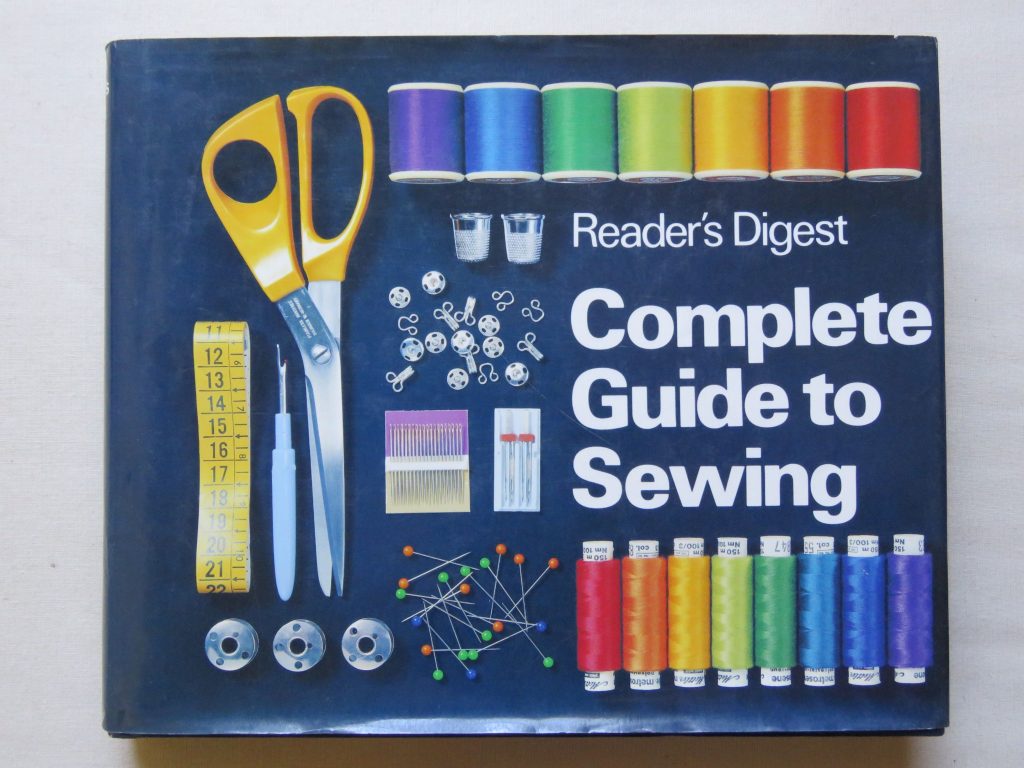
Zillions of these were printed, and are still around at good prices. If I see one for under $5, I’ll buy it to give to someone who’s new to sewing (they’re probably learning to sew from YouTube, but a reference book is always handy).

The book came out as home sewers were starting to use knit fabrics, but overlockers/sergers are not discussed at all – although they’d been invented and were available, I don’t think many people owned one.

This book boasts 13 methods for sewing a bound buttonhole!
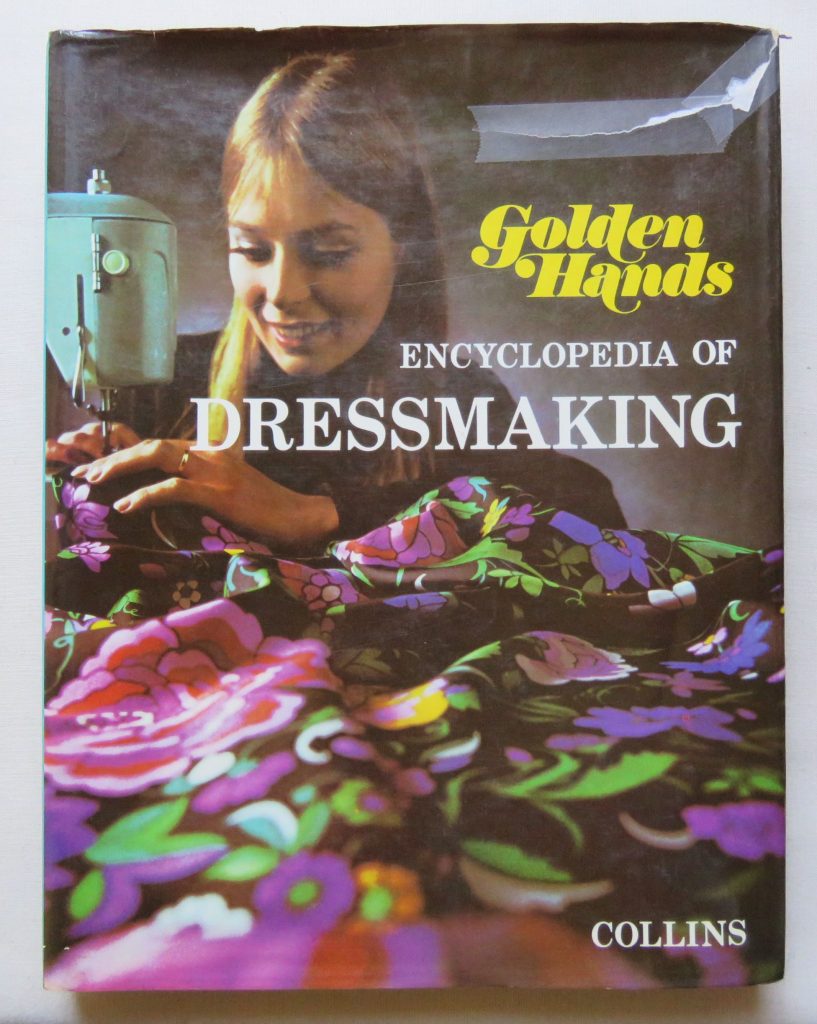
I think this book is a compilation of sewing booklets sold individually, as each chapter is more like a magazine article.
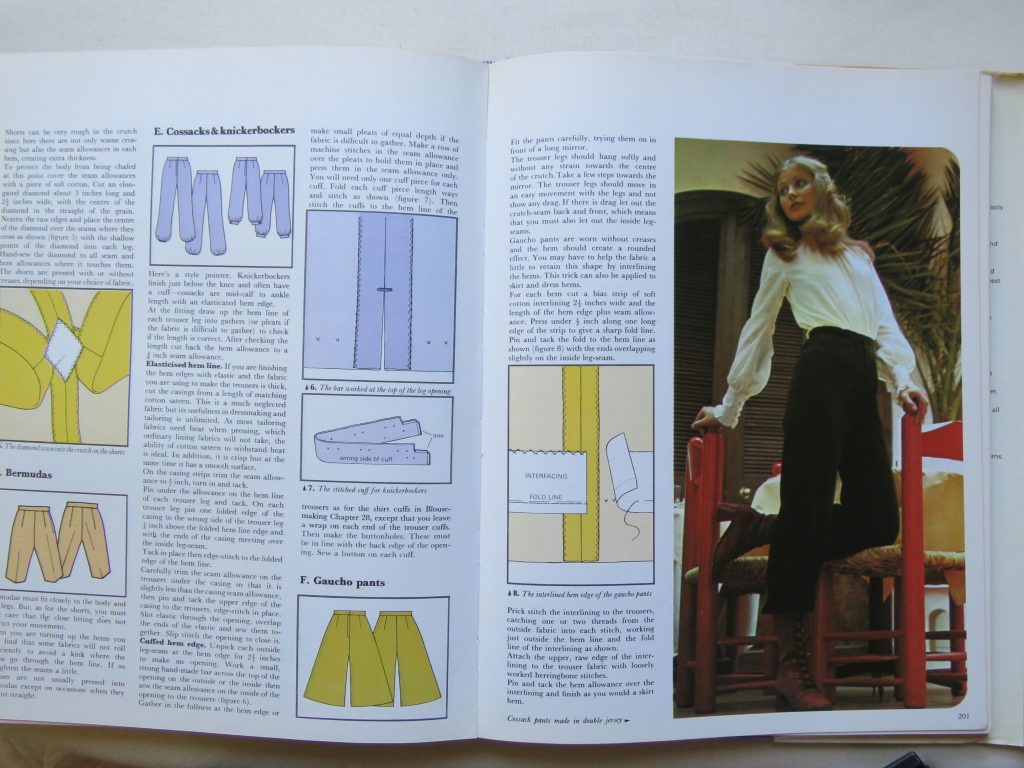
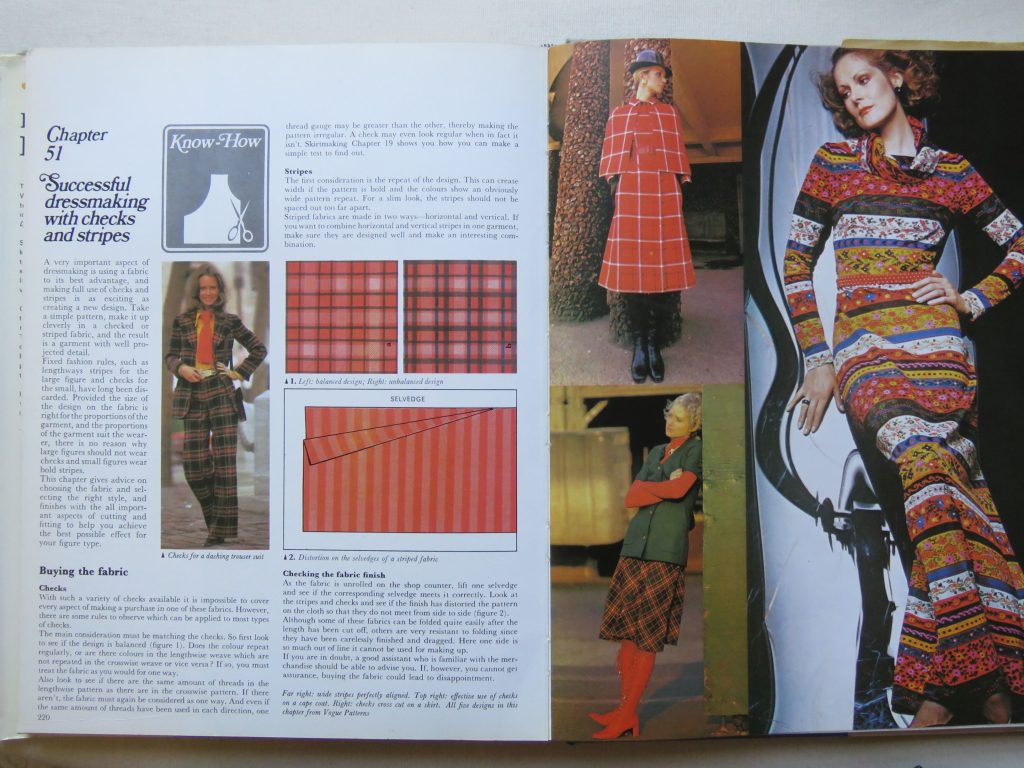
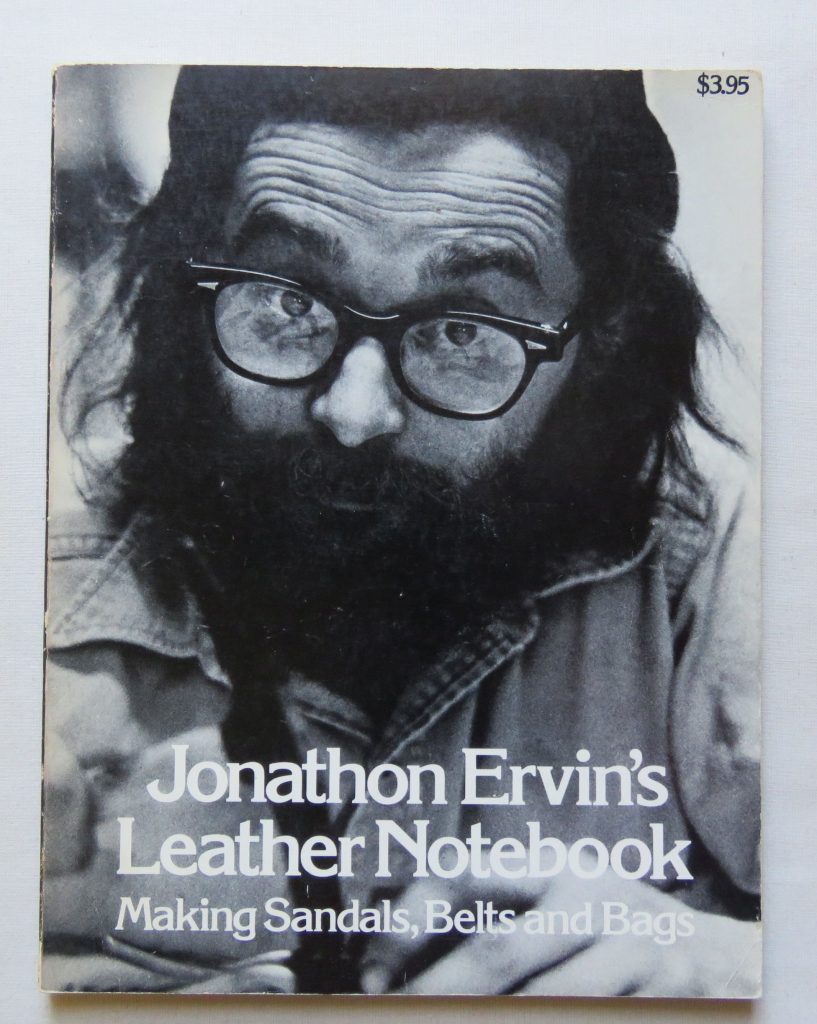
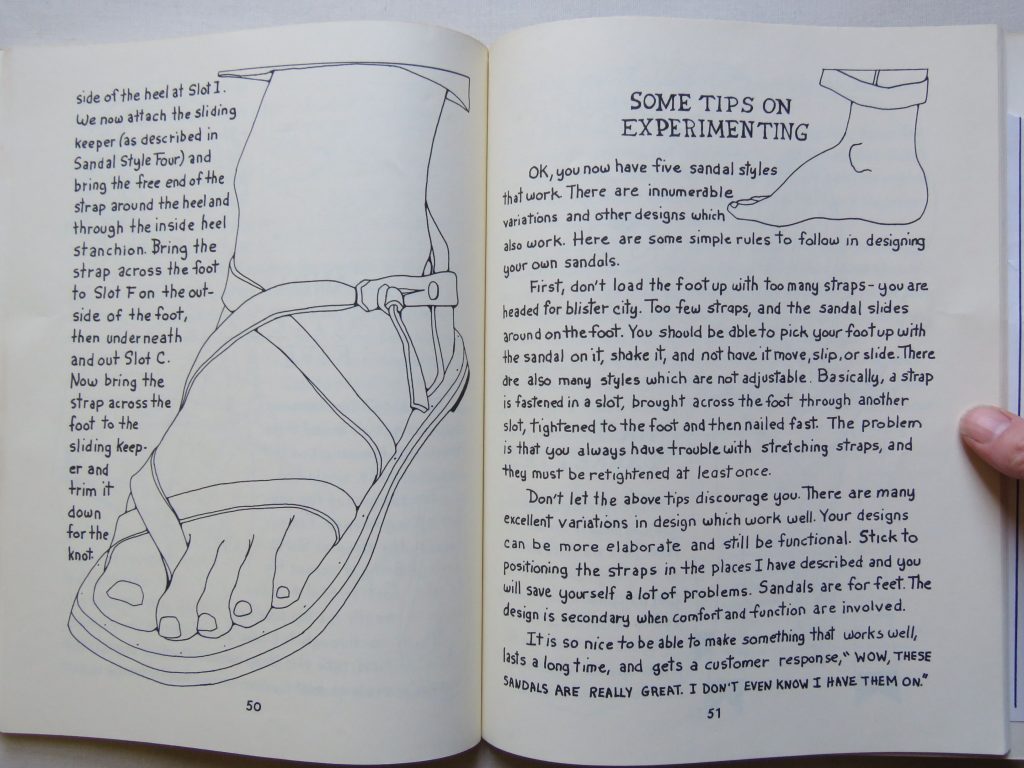
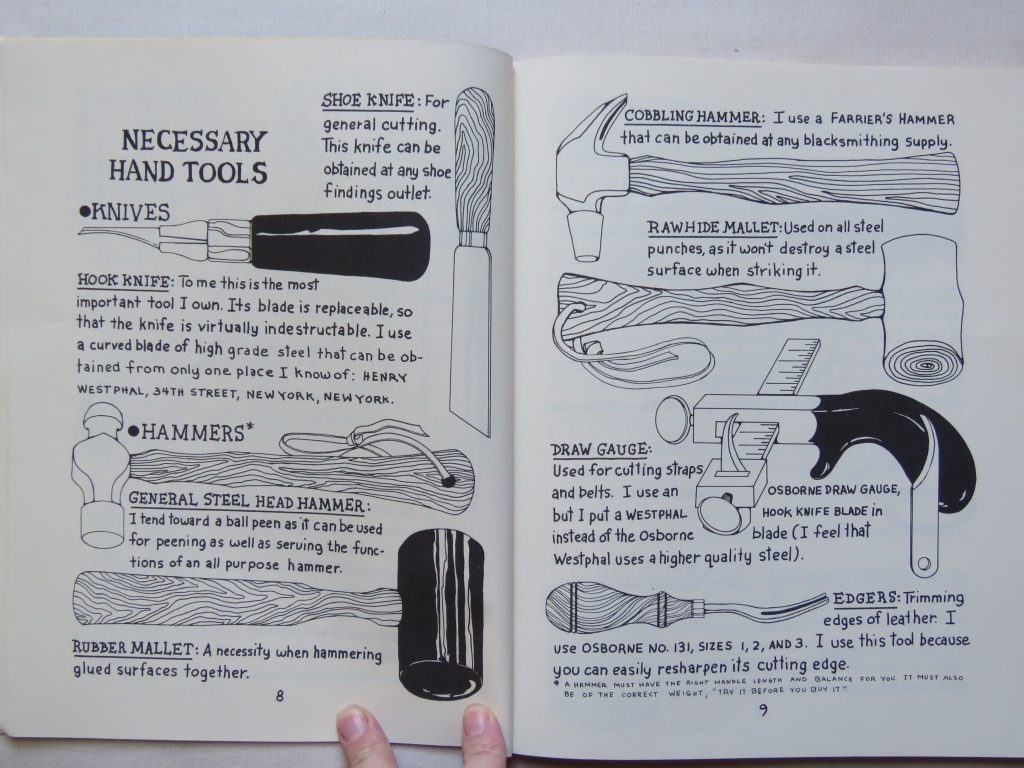
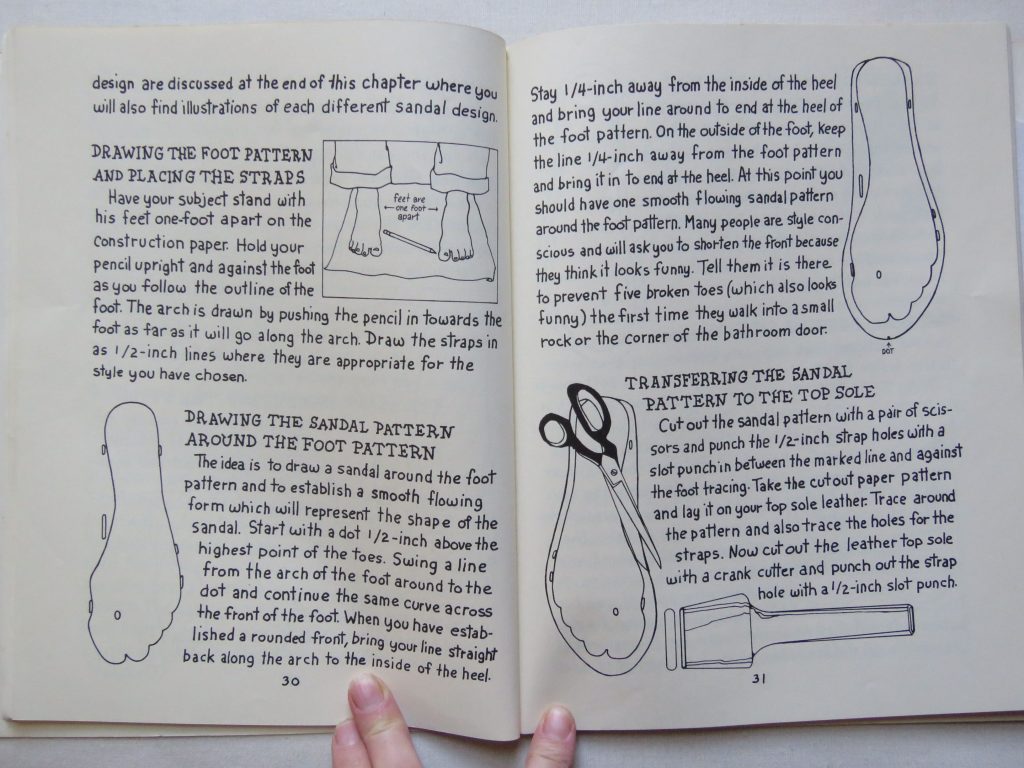
1960s
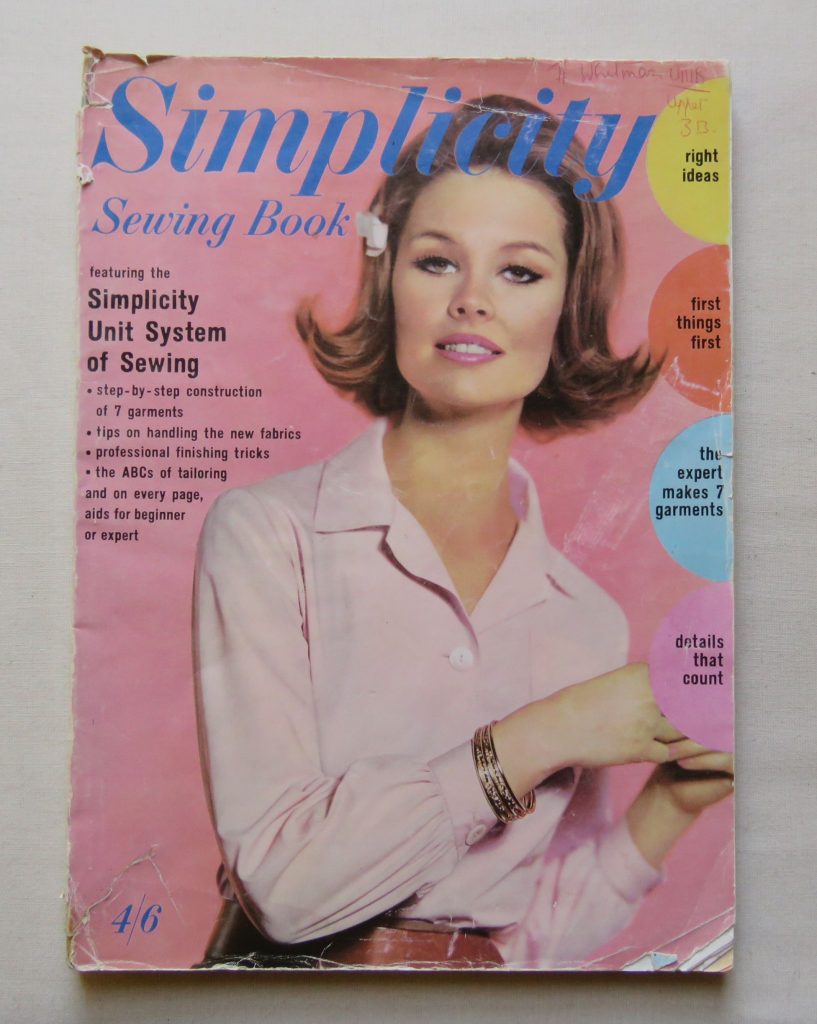
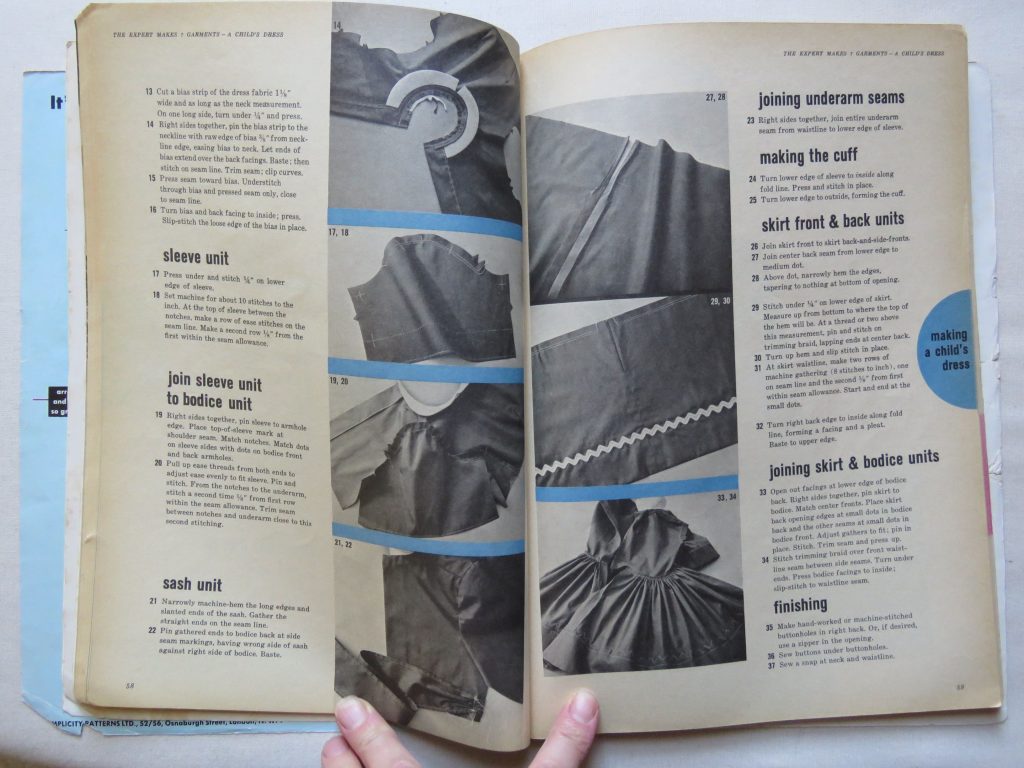
How much did the interior layout change with every edition? I compared it to a 1970s one I have, and they’re very different – the later book has glossy fashion photos and 1970s type clothes.
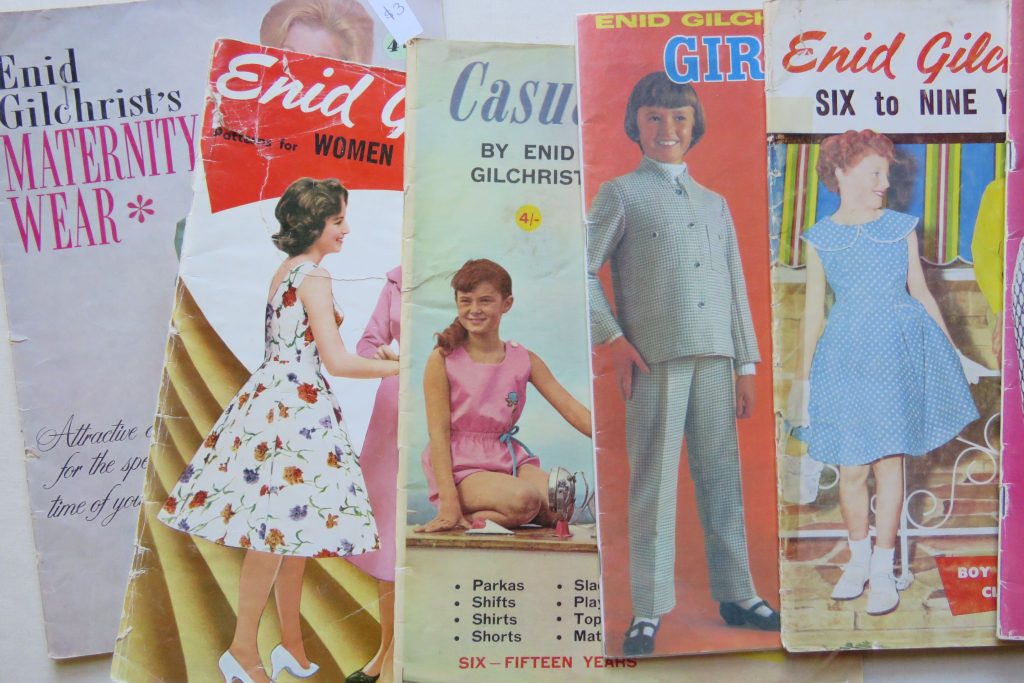
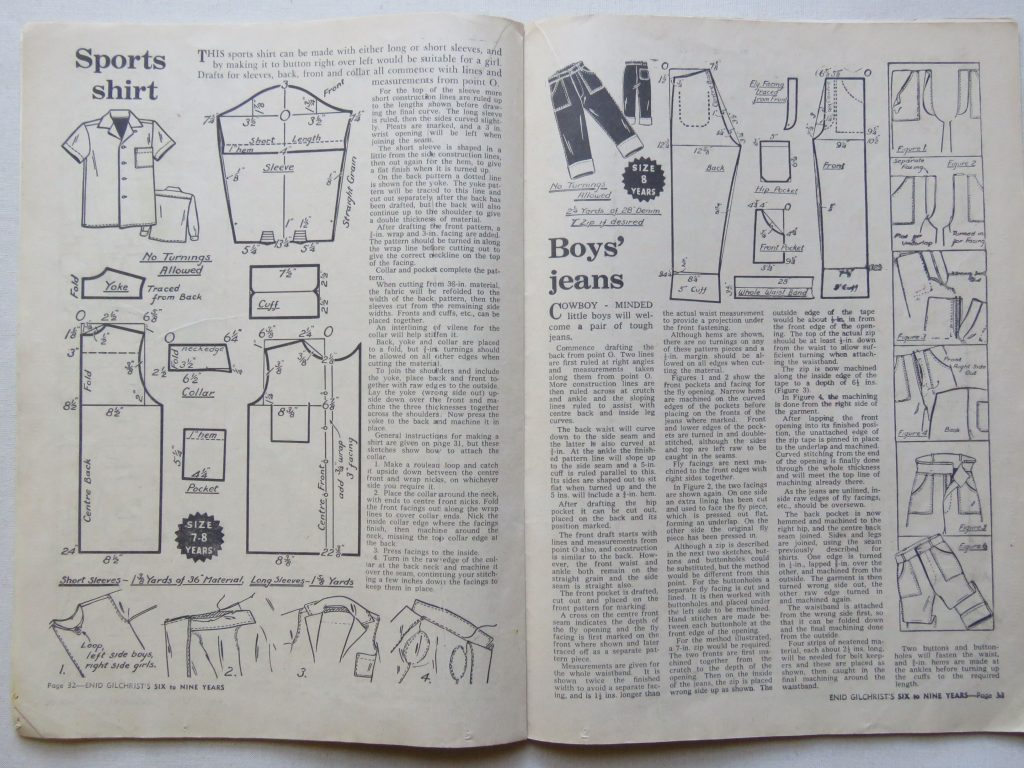
You drafted the pattern yourself following the instructions; the drafts were usually only one or two sizes.

The sewing instructions were brief, but most women knew how to sew.
1950s
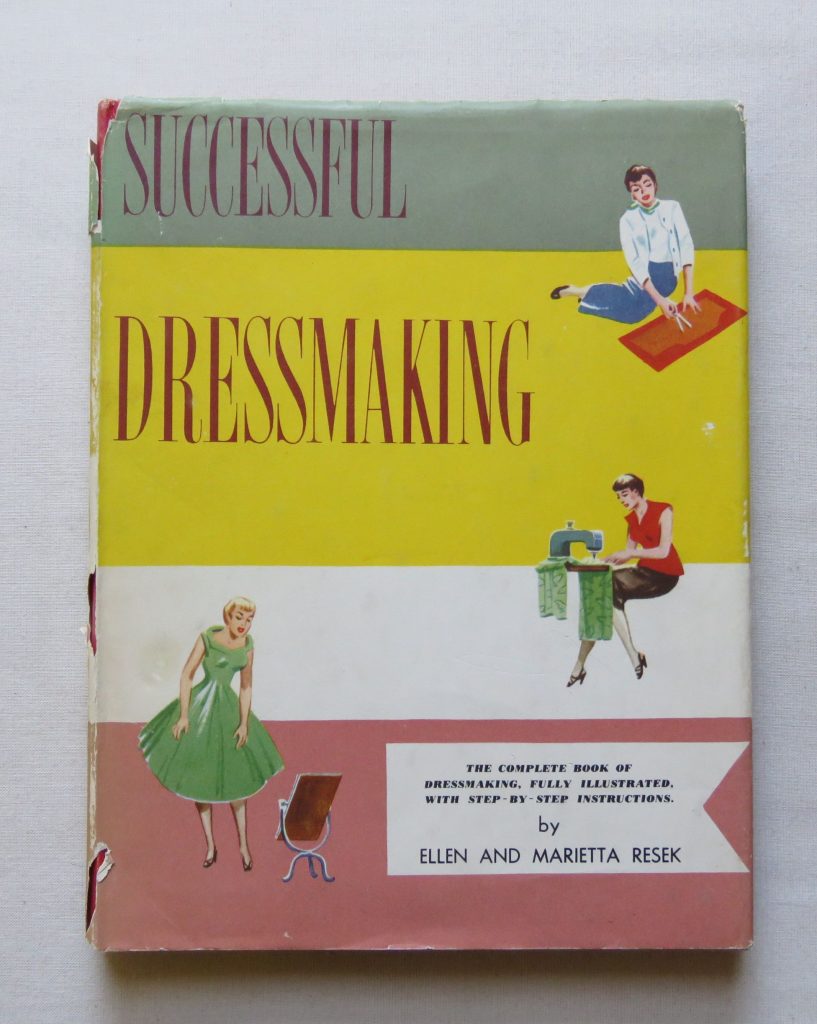
Sisters Ellen and Marietta Resek are both holocaust survivors born in Vienna. They were sent to England for safety in their teens, and eventually emigrated to Adelaide, Australia. You can read their story here. They had a lifelong interest in the arts and home economics.
Marietta Resek celebrated her 100th birthday earlier this year.
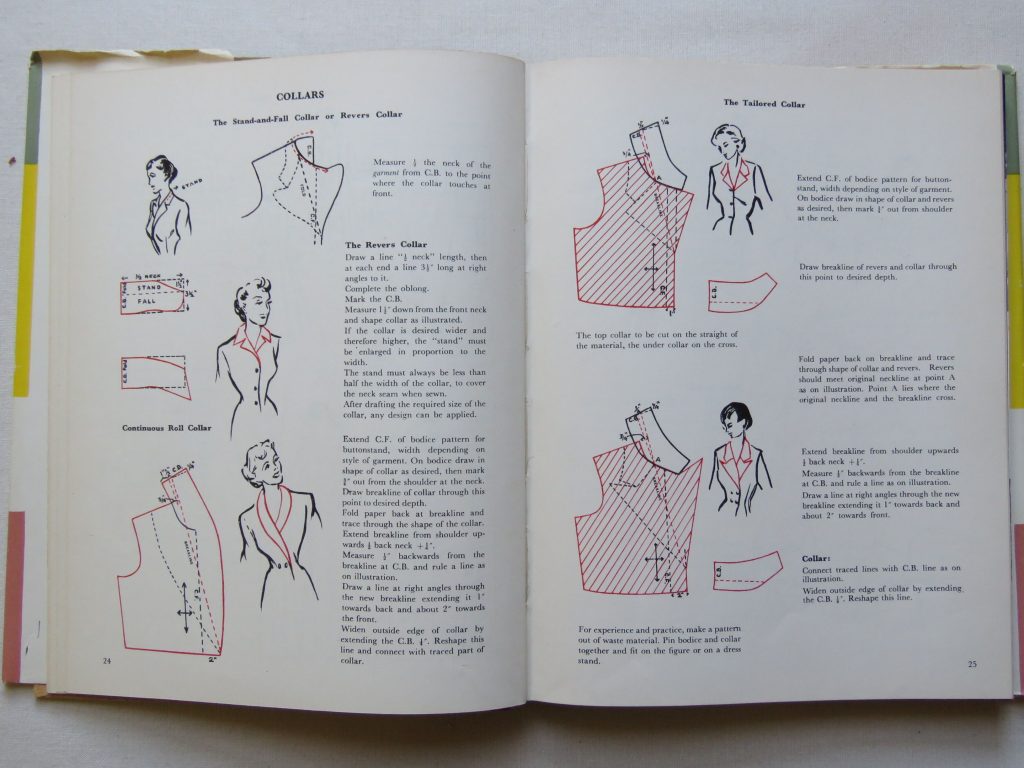
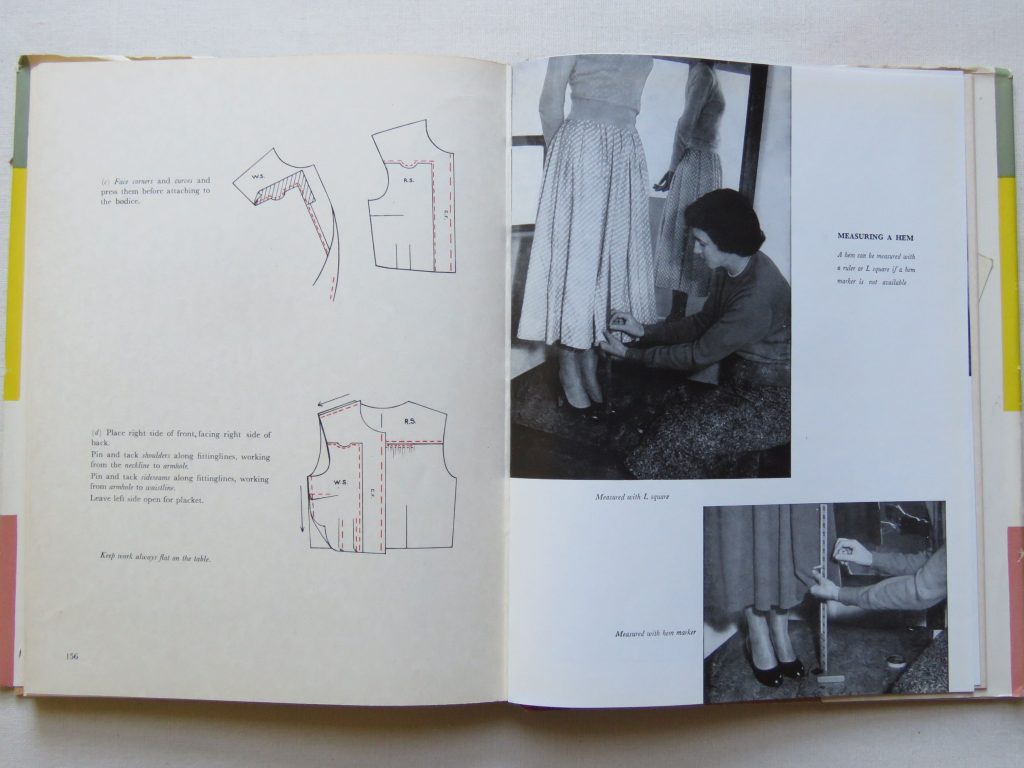
The Reseks wrote another book in 1980 called Success with Dress.
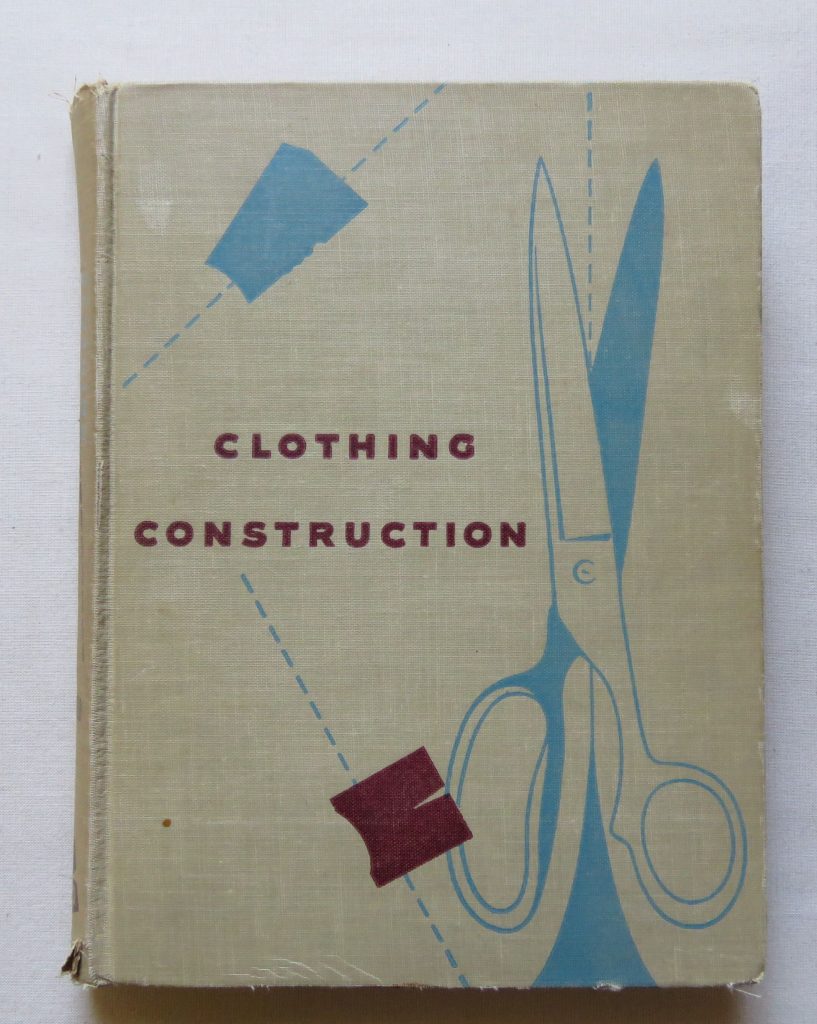

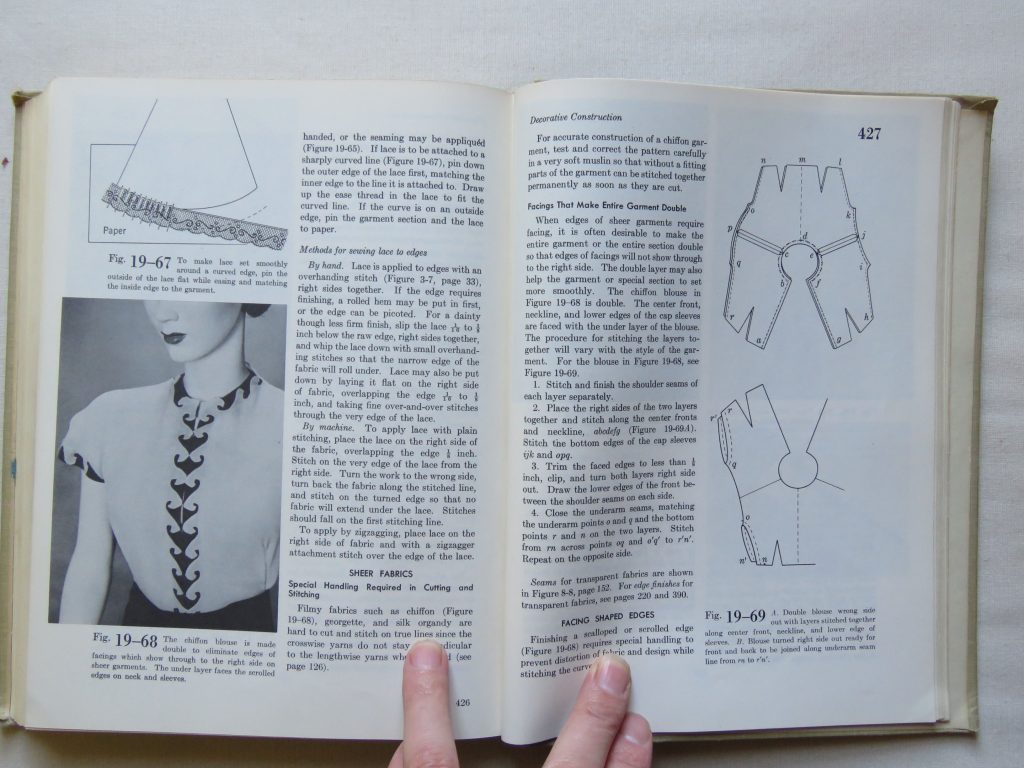
Please join me next week for a stroll through the 1940s, 1930s and 1920s. Here.
Cheers!
PS – Andrea in the comments, I think I’ve found you:
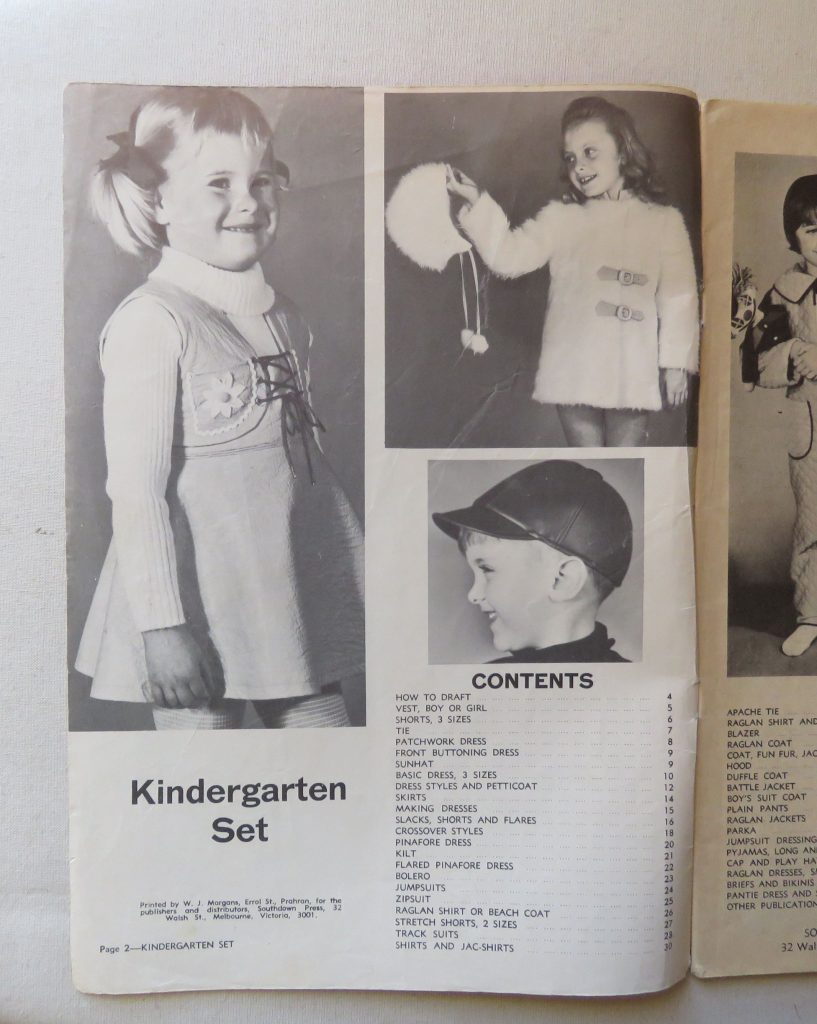
Thanks I really enjoyed that article! Looking forward to the next instalment.
Thank Linda; it was really fun to write.
I adore old sewing instruction books! I was very lucky (twenty years ago) to acquire library books from a university that had just eliminated its home economics department. (That could be an entire discussion.) One is circa 1910s, another is an instructor’s manual. Mine are all published in the US — useful since I was taught imperial measurements — but wonder about other differences from books published outside the US?
Gee, you were in the right place at the right time!
It is interesting about resources developed for home ec classes – in my 1940s collection (for next week) I have some books published by the South Australian Department of Education for their home ec classes, so I imagine they were developing their own textbooks…because none others existed to match their curriculum?
What a trip down memory lane, you’re right about the Golden Hands, it was issued as weekly items. I have the 1980 edition of Success With Dress – glossy pages and …colour! Mum
I was surprised at how many of your sewing books have landed in my bookcase, and wondered what happened to Success with Dress – glad you still have it. Quite amazing that the authors are still alive!
those pages fro the leather book are fantastic. You were right to put in a few extra.
I have a cookbook with the same approach, hand lettered and drawings. It gives it a special feeling – warm and cozy.
Thank you again for your great newsletters. Waving from the US West coast.
I love that look too – it give a “journal” vibe, like reading someone’s handwritten recipe book or sketchbook. I considered doing this for A Year of Zero Waste Sewing, but all the hand-done stuff is very hard on the wrists. Handwriting can be converted to an actual font, so it’s text not an image, which makes potential translating to another language easier, but in the end I chose a regular font.
Thanks for reading my newsletters 🙂
Hello Liz, I love looking at sewing books and those are truly wonderful! Thank youfor sharing. I look forward to next week‘s selection! Best, giuls
Thanks Giuls, I’m fortunate to have such an interesting collection.
Fabulous stuff. I also have a “museum’” section. I find it easier to donate more recent books than I do the older ones which I think sometimes have more instructional value. I love the patterns for variations on a theme!
Thanks for sharing
Thanks Margie, happy to hear that others have Museum sections too! I feel the same way about older books,
Thank you so much for sharing your sewing library. I‘ve got the German translation of the 1976 Reader’s Digest, which has exactly the same diagrams of hems (but the sewing machine is different). I inherited this book from my mother in law and it is a truly great resource. It’s much better than the 1995 Great Sewing School by Burda, but that might be down to the decade rather than the brand. I know that older versions were much better…
The leather notebook is intriguing! Please share a few more pages.
I really look forward to next week
It’s a great book. I hadn’t thought about other translations of it, but of course Reader’s Digest published in lots of countries. I recently heard they’d gone out of business, after almost 90 years.
The leather book is beaut, isn’t it? Didn’t want to put too many pages in due to copyright. I tried to find out what happened to the author, who must be at least 80 years old now, but nothing.
How fantastic to see your collection Liz.
My Mum swore by Enid Gilchrist and had many of those books in her collection, together with quilting magazines and other sewing books by the thousands. Funnily, my Mum was a lover of books but not of reading. I found a charity shop quite close to us that advised they have lots of ladies coming in all the time looking for old sewing / quilting books and they cannot keep them on the shelf. As I did not have the space to keep them all for myself, keeping just a very small selection, I was happy to pass them along for use by someone else. It is interesting to see the styles come around again and again and I think to some degree the only thing that has changed is the fabric itself.
Have a great day :o)
Thanks for sharing about Enid Gilchrist. I’m sure the new owners of your Mum’s books will take great care of them. I thought all the Enid Gilchrist styles were still very wearable (of course I spent a very pleasant time looking through them all for this blog post!).
I remember the Resek book, which we used in home economics in secondary school. One particular verse stuck in my mind:
To set in a sleeve causes so much strife,
That many a man may divorce his wife.
My mother did not approve of that sentiment. But all the rest of it was great.
Yes, I can see why. It’s crazy what lives rent-free in our heads for years, isn’t it? (For readers of these comments, the Resek book has little poems at the start of each chapter with a matching cartoon, very “of the era”.)
That is interesting that you used this book in school.
What memories….My family lived near Enid Gilchrest in Melbourne and she used to ask the local children to be her models. I absolutely loved it and so did my siblings.
Thanks for sharing, Andrea. Were you in any of the books? I could look you up!
Hi sorry I dont get notified when there is a reply…Yes I was in her books if you see a girl with a white fluffy (fur) coat and holding a hat – that’s me and my sister is on the cover of this one and my brother holding the table tennis bat – the whole neighbourhood got involved it was a lot of fun.
https://www.etsy.com/au/listing/1734744033/vintage-60s-enid-gilchrist-play-clothes?ga_order=most_relevant&ga_search_type=all&ga_view_type=gallery&ga_search_query=enid+gilchrist&ref=sr_gallery-2-36&sts=1&content_source=62d50a5afc4cde04eaad2e7354fdf679570c71f3%253A1734744033&organic_search_click=1
Hi Andrea, I think I found you – photo at end of post 🙂
Hi Yep that is me well done and my brother in the leather cap… cheers Andrea.
I really enjoy vintage crafting books! I found a 10 volume set with sewing, knitting, crocheting, etc that I love pulling out and reading.
Those volume sets are excellent, and they don’t seem to be a thing now. I bought a set from the 1970s (which I nearly put in this blog post but didn’t) from a second hand shop for mega cheap, and the shop lady said they had difficulty selling things like that. This one was called “Stitch and Sew”, and the previous owner had even bought the binders to store them in.
Allyne Bane was my professor at OhioUniversity who wrote many clothing construction books for college level classes. I was her student in 1970 and helped her write her Flat Pattern Design Book. She encouraged me to go to Drexel University where I got a BS in Fashion Design. I went on to have a great career designing children’s toys. You can check out my website at dreammakersart.com and under about see my resume and toys under Marketing and Licensing. I have a whole collection of her great books on creative sewing, clothing construction and more. I love old pattern from the 60’s as well…….
Thanks Suzi, I had a pleasant time looking at your website. I also looked up Allyne Bane, whose books I’ve never seen available in Australia. She was quite a prolific author – how great that you were a part of it.
Oh, I have the Golden Hands one too!
I think it still holds up well today!
Yes, I still refer to it from time to time.
am so fortunate to have a good amount of books,over two thousand,but there are a few on your list that I do not have thanks for posting ,jane
That is some library – I bet you enjoy all of them!
I collect vintage sewing books and have all of these and more. My nana’s copy of Successful Dressmaking was my first introduction to patternmaking. A few years ago I met one of Enid’s cousins whom Enid entrusted her with a lot of her stuff, including a self published autobiography written just for the family. It was lovely to chat about someone who has been a huge influence on my own career. Pam gave me several pattern books that had been Enid’s personal stock from the printer. They look brand new, which is weird because they are almost never found in pristine condition in the wild!
Hi Sandra, I have heard of the famous cousin Pam via someone else – what a wonderful conversation you must have had, and what generous gifts. You’re right about the condition of Enid Gilchrist books; testament to how good they are. All of mine are so well used and some are barely hanging together. Some are more sticky tape than paper!
A bit late to the party but thanks for posting about these books and really enjoyed the discussion thread following from this!
Hi Gwen, it’s never too late to leave a comment! Many thanks for reading.
I love old sewing manuals and I have a bit of a collection too, including Successful Dressmaking. My favourites are 3 volumes of Commonsense Dresscutting and Drafting by Muriel M Staeheli. According to the title page of volume one (pub. 1948) Muriel was a senior lecturer in home Science at the Senior Teachers’ College here in Brisbane.
Thank you for adding a favourite book to the comments. I looked up Staeheli as I haven’t heard of her. Interesting that there were quite a number of Aussie sewing & drafting textbook writers pre-1970.
I love collecting old sewing books. I do often use them to find out the history of techniques. It is can be useful when there is some disagreement on techniques.
The ones that came as suppliments in magazine are interesting for the sewing machine advsertisments. Especially to see how expensive the machines were back then. There is a reason why those old machine were workhorses, they cost a months wage or more
I have Simiplicy Sewing Book 1947 that also a matching film for it (mine has a different cover)
https://www.youtube.com/watch?v=cjypG79JKnY
Thanks Nic. That video is a gem!